|
With the passing of the seasons, the colours multiply and then fade, telling of luxuriance or the struggle for survival.
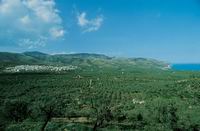 The spirit of the Mediterranean tells the tale of a partly forgotten world where orange and olive groves fill the air with their heady scent at every breath of wind, and all the senses are alerted to Nature in its daily recital. The spirit of the Mediterranean tells the tale of a partly forgotten world where orange and olive groves fill the air with their heady scent at every breath of wind, and all the senses are alerted to Nature in its daily recital.
MAN AND THE LAND
Man has always wrested areas from Nature on which to build homes, grow crops and rear animals. The Gargano area is a perfect example of how man has managed to find his niche and nurture life in an area which seems impossible to tame.
> It is from this very centuries-old relationship of interdependence between man and nature that the charm of the Gargano stems. Witness Peschici, balancing on a breth-taking cliff, or Monte Sant'Angelo, embracing the cave chosen by the Archangel Michael to appear to man. Witness the houses in Vico, which perch on the hill following its natural curves. It is from this very centuries-old relationship of interdependence between man and nature that the charm of the Gargano stems. Witness Peschici, balancing on a breth-taking cliff, or Monte Sant'Angelo, embracing the cave chosen by the Archangel Michael to appear to man. Witness the houses in Vico, which perch on the hill following its natural curves.
These are but a few examples of man's impact on the area.
A LAND OF HOLINESS
There are a places which, as a result of their history, position or the exceptional events which occurred there, are shrouded in a veil of almost tangible sacrality pervading every nook and cranny.
The Gargano is a “holy” land, a much-visited venue for some of the most important religious gatherings on a world-wide scale. The apparition of the Archangel Michael on Mount Gargano is without doubt the core of religious experience in this land. Thousands of pilgrims travel to visit the cold, dark grotto which Michael chose as his earthly dwelling.
But it is not only the cult of St. Michael which exalts the religious spirit of this area – there are the many churches, set against breath-taking backdrops, such as the Convent of St. Matthew in San Marco in Lamis.
In more recent times, the presence of Padre Pio, who lived in San Giovanni Rotondo, has provided a strong attraction for millions of people. But it is the Gargano as a whole which expresses its divine beauty in every time and space.
FOOD FOR THE FIVE SENSES
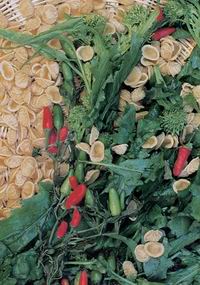 A table spread with the local dishes and products of this area is a feast for the senses. The variety of colours of the fruit, vegetables, fish, meat, cheeses and soups charm the eye and the spirit, and the nostrils are assailed with aromas at once delicate and heady. Tasting these dishes and the combinations of flavours is not the final act of a journey through the cuisine of this area. There is the history of this land, which tells of culinary “inventions”, different biotopes which have mingles dishes and foods from mountain, sea and lakeside areas, and from the various peoples who, from time to time, have passed through the area, leaving their mark on the culinary traditions. A table spread with the local dishes and products of this area is a feast for the senses. The variety of colours of the fruit, vegetables, fish, meat, cheeses and soups charm the eye and the spirit, and the nostrils are assailed with aromas at once delicate and heady. Tasting these dishes and the combinations of flavours is not the final act of a journey through the cuisine of this area. There is the history of this land, which tells of culinary “inventions”, different biotopes which have mingles dishes and foods from mountain, sea and lakeside areas, and from the various peoples who, from time to time, have passed through the area, leaving their mark on the culinary traditions.
Local delights include lamb, kid, eel, orange and lemons salads, stuffed morsels, cheeses, broad beans, snail soup, grape and fig cordials, macaroni with goat's meat sauce...
But what lends the most intense flavour to all these dishes is the olive oil which this land so generously produces.
GARGANO'S TOWNS
CAGNANO VARANO
The village of Cagnano is situated a few kilometres from a lagoon which offers the visitor a rare spectacle of natural beauty. Lying near the site of the ancient village of Uria, Cagnano is built around the Palazzo Baronale next to the Church of Santa Maria della Pietà. About three kilometres from here is the grotto where the Archangel Michael is said to have appeared. Every year on May 8th, the apparition is celebrated.
 CARPINO CARPINO
Carpino has linked its name to the revival of the folk music of this area which is now seen as a cultural heritage to be preserved and studied.
Officially, this village originated in 1158, in a Bull issued by Pope Hadrian IV, but other documents date it after. Built on a low hill lined with lovingly tended olive groves, Carpino is par excellence the “Oil town”. The visitor may also admire the archaeological complex called the “grotte di Minutille”, the Church of Santa Croce and Cirillo.
ISCHITELLA
Ischitella boasts a splendid view over the lagoon of Varano and the sea, although it is really a mountain farming village.
A legend tells that the pine-tree opposite the Church of San Francesco was planted from seed by St. Frances himself. The great trunk towers over one of the most important mediaeval centres of the whole of the Gargano – the “Terra Vecchia” district. The village features narrow alleys and long stairways in a herringbone layout, with houses overlooking the valleys below.
MATTINATA
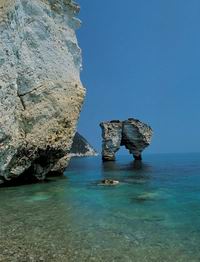 Mattinata is one of the mos popular seaside resorts on this coast, with the two smaller resorts of Mattinatella and the Baia delle Zagare. The area around the village grows olives, almonds, Indian figs and apricots. Matinum, as it was originally called, was much visited in Roman times, and was an important port for the wine and oil trade. The ruins of the Benedectine Abbey of the Santissima Trinità on Monte Sacro are well worth a visit. Mattinata is one of the mos popular seaside resorts on this coast, with the two smaller resorts of Mattinatella and the Baia delle Zagare. The area around the village grows olives, almonds, Indian figs and apricots. Matinum, as it was originally called, was much visited in Roman times, and was an important port for the wine and oil trade. The ruins of the Benedectine Abbey of the Santissima Trinità on Monte Sacro are well worth a visit.
MONTE SANT'ANGELO
800 metres above sea-level, Monte Sant'Angelo is inextricably linked to its history with the apparition of the Archangel Michael to whom the sanctuary of the same name is dedicated.
Thousands of tourist and pilgrims visit this area. The early settlement on the mount is preserved in the mediaeval Junno district, with its rows of white houses characterised by big chimney stacks. The Rotari Tomb (San Giovanni in Tumba), Santa Maria Maggiore and the castle are interesting to visit, as is the Tancredi Museum of Arts and Popular Traditions.
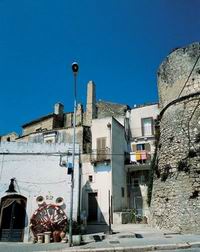
PESCHICI
The historical centre of Peschici seems to rise out the rock on which it is built, and is considered the “gem of the Gargano”. The little mediaeval district, perfectly preserved, enhances this resort which is one of the most important on the promontory. The most interesting site to visit is the castle built in the Recinto Baronale, but the little Church of San Michele and the abbey of Santa Maria di Calena, founded in the 11th century by the Benedictines, are also charming.
RIGNANO GARGANICO
This village is nicknamed the “Balcony of Apulia”, and it overlooks the great plain of Apulia. Thanks to its position, it is a popular delta-planing site. Neolithic cave paintings and a dolmen discovered in the Grotta Paglicci are make it a most fascinating archaeological site. Don't forget to try the bread, and the famous “Musciska” - salted, dried meat.
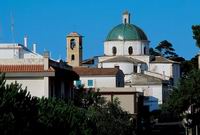 RODI GARGANICO RODI GARGANICO
Rodi Garganico is an interesting seaside village which lies on a small promontory on the northern side of the Gargano between two long sandbanks and surrounded by citrus fruit groves. This ancient Cretan colony offers a relaxing view of a clear sea and beautiful beaches. Its art is no less interesting, and the visitor may admire the Sanctuary of Santa Maria della Libera, the Churches of San Nicola and the Crucifix, the Convent of Santo Spirito and San Pietro, and the alleys of the harbour area with their monumental chimneys stacks.
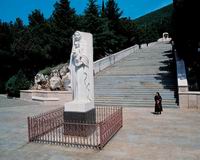
SAN GIOVANNI ROTONDO
A meeting place for all religious people, San Giovanni Rotondo was where Padre Pio spent his life. The many churches bear witness to the religiosity of the people in this area – the little Church of San Giovanni or della Rotonda from whom the town seems to have taken its name, the Church of Sant'Onofrio, the Chapel of the Madonna di Loreto and the Church of Sant'Orsola. The whole town is overlooked by Monte Calvo which, with its 1065 metres, is the highest peak in Gargano.
SAN MARCO IN LAMIS
The village of San Marco in Lamis lies 550 metres above the sea-level. This area is another in which religiosity plays an important role. The Sanctuary of Santa Maria di Stignano and the Matrice Church are worth a visit while the Convent of San Matteo, probably built in the 6th century, is the major attraction. The convent still houses and extraordinary collection of ancient texts. A local tradition which is interesting to watch is the “fracchie” race, on Good Friday, in which bundles of blazing logs are dragged through the village.
SANNICANDRO GARGANICO
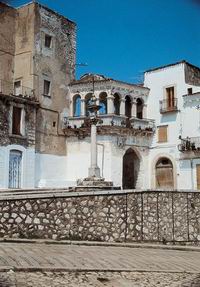 Sannicandro is one of the most populous villages of the whole Gargano peninsula, and it was built around the Norman castle. However, the whole historical centre is fascinating. The most important sites are the Church of Santa Maria del Borgo, the ancient Byzantine district of Devia, the Romanic Apulian Church of Santa Maria di Monte d'Elio, and the beautiful arena of Pozzantina. Sannicandro is one of the most populous villages of the whole Gargano peninsula, and it was built around the Norman castle. However, the whole historical centre is fascinating. The most important sites are the Church of Santa Maria del Borgo, the ancient Byzantine district of Devia, the Romanic Apulian Church of Santa Maria di Monte d'Elio, and the beautiful arena of Pozzantina.
VICO DEL GARGANO
Vico del Gargano may be considered the capital of the Gargano forests, and a large part of the Foresta Umbra lies within its territory. One of the most charming sites is the terraced buildings which follow the natural curves of the hill they are built on. The most interesting artistic features are the remains of a castle which was probably commisioned by Frederic II, and the Capuchin Convent. Right opposite the Convent is the enormous hornbeam oak which, according to the Archives of the Convent, is about 350 years old. In Vico there are also the best springs in the promontory.
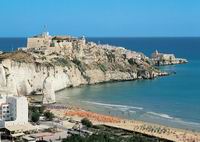
VIESTE
Vieste lies on a small rocky peninsula, between S. Lorenzo and the castle beach. The harbour is important for trade with the shores on the other side of the Adriatic. The centre of the village is most picturesque with its narrow alleys, arches, and white-washed houses. There is also an interesting cathedral in Romanic-Apulian Style which seems to have been built on the site of an ancient pagan temple. The beach at Vieste is overlooked by the Pizzomunno, a huge, natural monolith.
Texts and photos kindly permit by Comunità Montana del Gargano
|



 Munch: The Scream Within
Munch: The Scream Within In the garden
In the garden Perugia Travel Guide
Perugia Travel Guide


 The spirit of the Mediterranean tells the tale of a partly forgotten world where orange and olive groves fill the air with their heady scent at every breath of wind, and all the senses are alerted to Nature in its daily recital.
The spirit of the Mediterranean tells the tale of a partly forgotten world where orange and olive groves fill the air with their heady scent at every breath of wind, and all the senses are alerted to Nature in its daily recital. It is from this very centuries-old relationship of interdependence between man and nature that the charm of the Gargano stems. Witness Peschici, balancing on a breth-taking cliff, or Monte Sant'Angelo, embracing the cave chosen by the Archangel Michael to appear to man. Witness the houses in Vico, which perch on the hill following its natural curves.
It is from this very centuries-old relationship of interdependence between man and nature that the charm of the Gargano stems. Witness Peschici, balancing on a breth-taking cliff, or Monte Sant'Angelo, embracing the cave chosen by the Archangel Michael to appear to man. Witness the houses in Vico, which perch on the hill following its natural curves. A table spread with the local dishes and products of this area is a feast for the senses. The variety of colours of the fruit, vegetables, fish, meat, cheeses and soups charm the eye and the spirit, and the nostrils are assailed with aromas at once delicate and heady. Tasting these dishes and the combinations of flavours is not the final act of a journey through the cuisine of this area. There is the history of this land, which tells of culinary “inventions”, different biotopes which have mingles dishes and foods from mountain, sea and lakeside areas, and from the various peoples who, from time to time, have passed through the area, leaving their mark on the culinary traditions.
A table spread with the local dishes and products of this area is a feast for the senses. The variety of colours of the fruit, vegetables, fish, meat, cheeses and soups charm the eye and the spirit, and the nostrils are assailed with aromas at once delicate and heady. Tasting these dishes and the combinations of flavours is not the final act of a journey through the cuisine of this area. There is the history of this land, which tells of culinary “inventions”, different biotopes which have mingles dishes and foods from mountain, sea and lakeside areas, and from the various peoples who, from time to time, have passed through the area, leaving their mark on the culinary traditions. CARPINO
CARPINO Mattinata is one of the mos popular seaside resorts on this coast, with the two smaller resorts of Mattinatella and the Baia delle Zagare. The area around the village grows olives, almonds, Indian figs and apricots. Matinum, as it was originally called, was much visited in Roman times, and was an important port for the wine and oil trade. The ruins of the Benedectine Abbey of the Santissima Trinità on Monte Sacro are well worth a visit.
Mattinata is one of the mos popular seaside resorts on this coast, with the two smaller resorts of Mattinatella and the Baia delle Zagare. The area around the village grows olives, almonds, Indian figs and apricots. Matinum, as it was originally called, was much visited in Roman times, and was an important port for the wine and oil trade. The ruins of the Benedectine Abbey of the Santissima Trinità on Monte Sacro are well worth a visit.
 RODI GARGANICO
RODI GARGANICO
 Sannicandro is one of the most populous villages of the whole Gargano peninsula, and it was built around the Norman castle. However, the whole historical centre is fascinating. The most important sites are the Church of Santa Maria del Borgo, the ancient Byzantine district of Devia, the Romanic Apulian Church of Santa Maria di Monte d'Elio, and the beautiful arena of Pozzantina.
Sannicandro is one of the most populous villages of the whole Gargano peninsula, and it was built around the Norman castle. However, the whole historical centre is fascinating. The most important sites are the Church of Santa Maria del Borgo, the ancient Byzantine district of Devia, the Romanic Apulian Church of Santa Maria di Monte d'Elio, and the beautiful arena of Pozzantina.